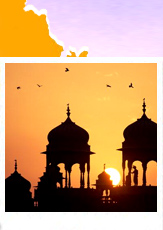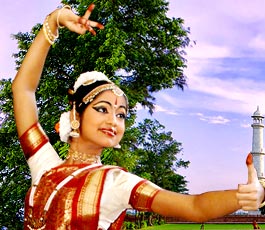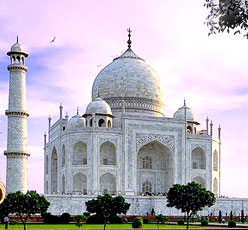
Ladakhi monasteries or Gompas are mostly built on solitary rocks or atop steep hills. They may belong to either the Mahayana or the Hinayana sect of Buddhism but all of them play a major role in the beauty, lifestyle and culture prevailing in the region. The head-lama is often called as 'Kushak', which means 'reincarnation'. Here we present a list of the most popular monasteries of Ladakh for the benefit of our readers.
Hemis Gompa
The 17th century monastery of Ladakh, Hemis is also the largest one in the region. 45 km south of Leh, it belongs to Brokpas, the red sect. Unique in its own sense, this monastery is both splendid and majestic. An annual festival is held here in June or July for two days commemorating the birth anniversary of Guru Padmasambhava. As a ritual offering, this festival features masked dances of monks depicting the victory of good over the evil.
Namgyal Tsemo Gompa
The 15th century monastery of Namgyal Tsemo Gompa features a three-storey high statue of Buddha, ancient manuscripts and delicate frescoes. Above the gompa, is a fort, now in ruins, that offers splendid views of the Leh valley from here.
Sankar gompa
Sankar gompa belongs to the monks of Gelukpa order and features the awesome statue of the Buddhist deity Avalokiteshwara Padmahari or Chenresig with 1,000 heads and as many number of arms.
Shanti Stupa
Built by Dalai Lama in 1985, Shanti Stupa was built by a Japanese order and offers exotic views of the panoramic surroundings.
 Thiksey Monastery
Thiksey Monastery20 km from Leh, Thiksey is one of the most beautiful and majestic monastery of Ladakh. Situated atop the hill, it belongs to Gelukpa order. Paldan Sherab, nephew of Sherb Zangpo, founded 12-storey monastery complex featuring stupas, statues, thankas, wall paintings, swords, Buddha's teachings engraved on a pillar and sacred shrines. Its main prayer hall has 15 m high statue of seated Buddha. The annual Thiksey festival is held from 17th to 19th day of the 12th month.
Likir Monastery
52 km from Leh, it was founded by Klu-Kkhjil in the 11th century but was rededicated to the yellow sect (another monastic order) in the 15th century. Once destroyed by fire, the present building of the gompa was built in 18th century. The highlights of the monastery are huge clay images of Buddha, old manuscripts, a rich collection of thankas, old religious and domestic costumes and religious implements. The monastery also belongs to Gaylukpa school of Buddhists. An annual is held here from the 17th to 19th of the 12th month.
Spituk Monastery
18 km from Leh, Spituk Gompa is situated atop the hill. Od-De founded it in the 11th century. Rinchen Zangpo gave the gompa its present name, which means 'exemplary'. During the reign of King Gragspa Bumide, it passed from the hands of the Kadampa School to the Gaylukpa order. The gompa features an interesting collection of ancient masks, arms, icons and thankas. The annual festival of the monastery is held from 17th to 19th days of the 11th month.
Cave Monastery
The cave monastery of Shergole surprises almost anyone. S and old, it has interesting frescoes but what sets it apart is the way it seems suspended in the middle of a mountain as it juts out of a brown, granite cliff.
Lamayuru Monastery
125 km west of Leh, the 10th century Lamayuru monastery is now mostly in ruins. According to an interesting legend, Lamayuru was once a lake, whose water receded up to the mountains when blessed by a Lama to vacate the site for the monastery to be built. Today, only the main hall has survived featuring a number of thankas. A visual treat, Lamayuru has man-made caves in its mountains. It is also known as Yung Drung (Swastika). The annual Yundrung Kabgyad festival is held at the beautiful gompa in summers on the 28th and 29th days of the 2nd Tibetan month.
Shey Monastery
15 km south of Leh, Shey monastery is the former redidence of the royal family. Lhachen Palgyigon, the first king of Ladakh, built it. It features 12 ft high statue of Shakyamuni Buddha made by copper guilt and another statue of Buddha, which is three-storeys high. Also known as Dresthang Gompa, it is adorned with stone carving and chortens scattered around it.
Zongkhul Monastery
Zongkhul is a cave monastery of Zanskar, Zongkhul situated on the on the rock face of the Ating George. Associated with the famous Indian Yogi, Naropa from Vikramshila, it is said that he used the two caves of the monastery as a site for his solitary meditation. The old artistic frescoes are said to be original murals done by Zhadpa Dorje some 300 years ago. Zhadpa Dorje was the celebrated scholar-painter of the monastery.









